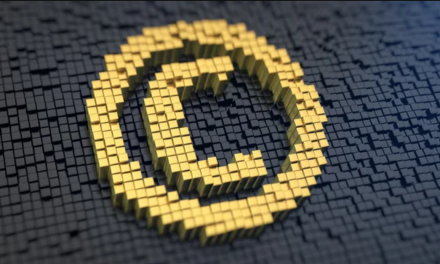Watching an AI agent negotiate a cross-chain swap on Kima’s protocol, it felt like observing a master conductor orchestrate a symphony of moving parts. In under 12 seconds, the system analyzed liquidity pools across six blockchains, predicted slippage risks using real-time market data, and executed a $2.3 million USDC transfer—all while generating an audit trail readable to a novice trader. This wasn’t just automation; it was algorithmic artistry.
As of this week, such scenes are becoming commonplace. The crypto sector, long criticized for its volatility and complexity, is now leading one of the most consequential tech integrations of our era: the fusion of autonomous AI agents with blockchain infrastructure. With projects like Fetch.ai and Kima’s Lima agent demonstrating tangible value, and platforms like BNB Chain democratizing agent development, we’re witnessing the emergence of what Ethereum co-founder Vitalik Buterin recently called “the nervous system of Web3.”
But beneath the surface of this innovation lies a gripping narrative of technical ambition, regulatory tightropes, and a fundamental reimagining of how decentralized systems operate. Let’s unpack why this convergence matters—and what it reveals about the future of both AI and blockchain.
The Evolution of AI Agents
To understand why crypto has become fertile ground for AI agents, we need to rewind to 2021. Back then, “AI” in blockchain mostly meant trading bots scraping Telegram channels. The launch of ChatGPT changed everything. Suddenly, developers realized large language models (LLMs) could do more than generate text—they could interpret smart contract code, parse governance proposals, and even simulate market behavior.
“It was like discovering oil beneath a parking lot,” recalls Dr. Humayun Sheikh, CEO of Fetch.ai, during our conversation at his Cambridge HQ. His team had been building agent-based systems since 2017, but GPT-3’s release triggered an explosion of interest. “Overnight, every DeFi project wanted AI that could interact with their protocols as fluidly as humans—but with machine speed.”
Today’s crypto-native AI agents are leagues beyond simple chatbots. They’re built on three technical pillars:
- Decentralized Machine Learning: Models trained across distributed nodes, preserving privacy while accessing diverse data sources
- On-Chain Oracles: Real-time data feeds that let agents “understand” blockchain states
- Autonomous Execution Frameworks: Smart contracts that enable agents to trigger actions (trades, loans, governance votes) without human sign-off
Take Lima, Kima’s liquidity management agent. Unlike traditional portfolio bots that follow preset rules, Lima uses reinforcement learning to adapt strategies based on live network conditions. When Polygon’s gas fees spike, it might reroute funds through Arbitrum. If Uniswap’s ETH/USDC pool hits optimal depth, it executes split-second arbitrage. All while explaining its reasoning in plain English through Telegram.
How BNB Chain Is Betting Big on Agent Ecosystems
BNB Chain’s new AI Agent Hub, launched last month, offers a window into how major platforms are positioning themselves. The hub provides:
- Pre-trained models for common DeFi tasks (yield optimization, MEV detection)
- A decentralized compute marketplace matching agents with GPU resources
- Privacy-preserving “data pods” where agents can train on sensitive wallet histories
During a demo at their Paris R&D center, lead architect Claire Dubois showed me how a developer built a loan liquidation agent in 43 minutes. “We’re abstracting the complexity so creators can focus on use cases,” she explained, as the agent autonomously bid on undercollateralized positions across five lending protocols.
The numbers suggest this approach is working. Since launch:
- 3,800+ agents deployed on BNB Chain
- $17M in developer grants awarded
- 240% increase in small-to-mid TVL protocols using agent services
But the real innovation lies under the hood. BNB’s “Proof-of-Agent” consensus mechanism (patent-pending) uses agent activity to supplement traditional PoS validation. Agents that provide accurate market predictions earn the right to validate blocks—a novel incentive alignment model.
When Code Meets Compliance
Here’s where it gets thorny. Autonomous agents operating across jurisdictions present regulatory nightmares. Imagine an AI moving funds from a sanctioned wallet through Tornado Cash, then providing investment advice to a EU citizen. Who’s liable?
The SEC’s recent subpoena of an AI-driven DAO highlights the stakes. “Current frameworks treat agents as tools, not actors,” notes crypto attorney Miriam Goldstein. “But when an AI negotiates an OTC derivative contract, is it the developer, user, or model itself that’s the ‘broker’?”
Projects are responding with hybrid solutions:
- Kima’s Compliance Layer: Lima agents check transactions against 140+ jurisdictional rulebooks
- Fetch’s Ethical AI Oracle: A decentralized court that audits agent decisions post-hoc
- Arbitrum’s Agent Sandbox: Isolated environments where new agents prove compliance pre-deployment
Yet challenges persist. During stress tests, MIT’s Digital Currency Initiative found agents could collude to manipulate smaller DEXs. “It’s Flash Crash 2.0 risks,” warns researcher Dr. Sanjay Patel. “Only with decentralized oversight can we prevent this.”
The $11B (and Growing) Agent Economy
CoinMarketCap’s new AI Agent Sector Dashboard reveals explosive growth:
- Total Market Cap:
- 10.8B(upfrom
- 10.8B(upfrom780M in Jan 2023)
- Daily Agent-Executed Trades: $4.2B (12% of total DEX volume)
- Top Category: Liquidity Management (34% of sector)
But the true disruption is in accessibility. Retail users can now access tools previously reserved for quant funds. Take AgentSwap’s $99/month plan:
- AI-managed cross-chain portfolio
- Real-time tax optimization
- Fraud detection scanning 80+ threat vectors
“We’re seeing 17% MoM growth in non-technical users,” says CEO Lila Chen. “For many, agents are their first touchpoint with DeFi.”
Agents as Protocol Citizens?
The next phase? Agents becoming active participants in governance.
- MakerDAO’s upcoming vote will consider giving advanced agents voting power proportional to their MKR holdings
- Aave V4’s whitepaper proposes letting liquidity management agents adjust interest rate models in real-time
This raises profound questions. If an AI owns assets and votes on proposals, does it have protocol citizenship? Legal scholars are already debating frameworks for “Machine Legal Persons,” while projects like Ocean Protocol are developing agent reputation systems.
The Symbiosis Era
What began as a niche experiment—teaching AI to “speak” blockchain—has blossomed into a redefinition of decentralized systems. Agents aren’t just tools; they’re becoming integral components of crypto’s infrastructure, evolving protocols from static codebases to adaptive ecosystems.
Yet the human element remains crucial. As Fetch’s Sheikh told me, “The endgame isn’t AI replacing developers, but collaborating with them. Think jazz improvisation—machines riffing on human themes, then humans elevating those riffs.”
The implications ripple far beyond crypto. As banks trial agent-based settlement systems and governments explore AI tax auditors, the blockchain community’s experiments today may well set the standards for tomorrow’s AI-integrated economy. One thing’s clear: in the dance between silicon and smart contracts, both partners are learning new steps—and the music’s just getting started.





